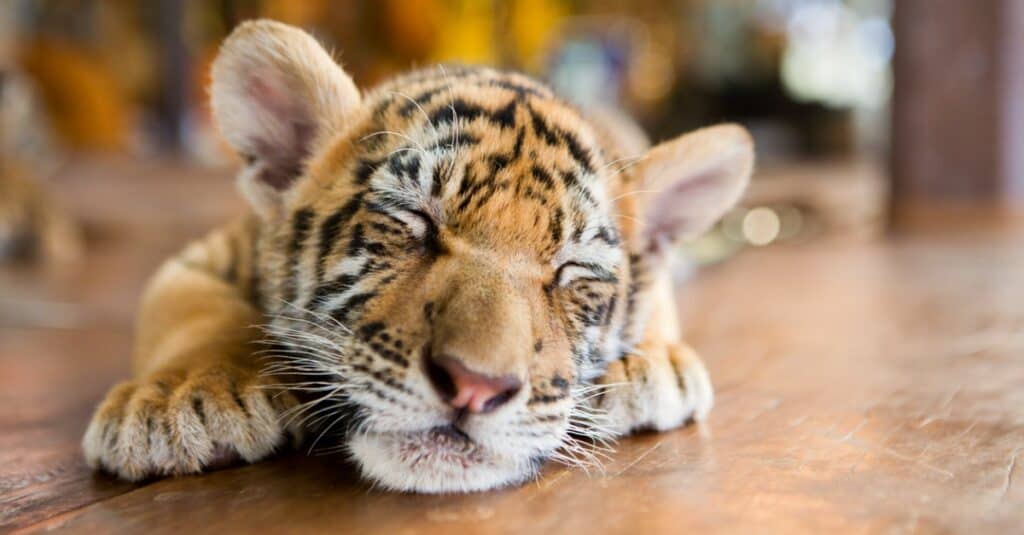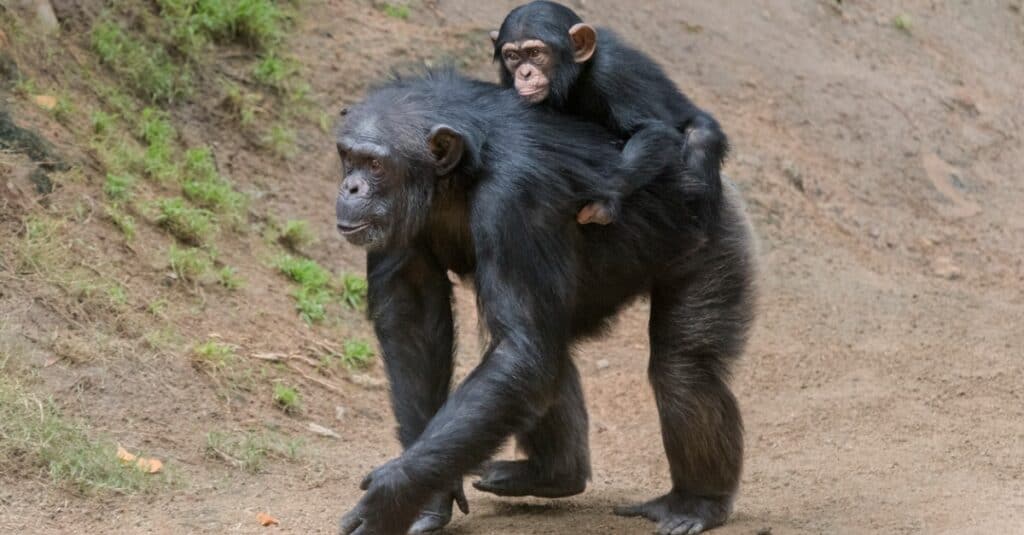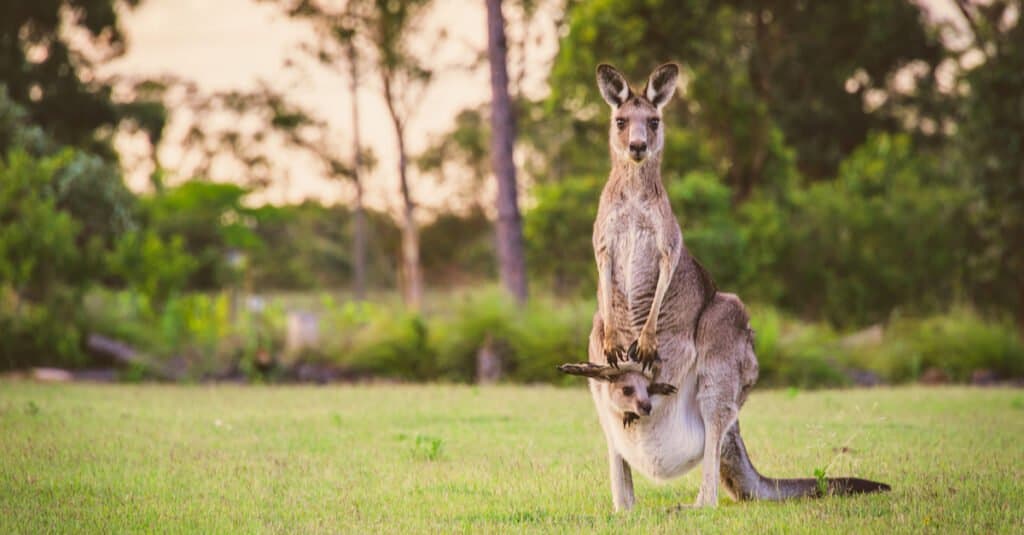Viviparity is something nearly all mammals and many other creatures have in common. Viviparous animals include everything from humans to mice, but just what does it mean to be viviparous? Viviparity isn’t the only method of reproduction on Earth; it’s one of many ways of bringing offspring into the world.
Here, we’ll learn more about viviparous animals and just what viviparity entails. We’ll review some examples of viviparous animals and discover what kind of creatures typically exhibit viviparity. We’ll also learn a little more about the reproductive methods of each of our example animals. Finally, we’ll discover more about animals that rely on other methods of reproduction, such as oviparity and ovoviviparity.
Keep reading to learn just what viviparity means and which animals use it to make babies!
What is Viviparity?

Viviparity is the development of the embryo inside the body of the parent.
©iStock.com/cosmin4000
Viviparous animals are extremely common; in fact, most mammals are viviparous. Viviparity means that when females incubate young, those young develop directly inside the female’s body. At no point do they develop inside an egg, either inside or outside the body of the female.
In contrast to viviparity, there are two other methods of reproduction commonly used by animals, birds, and insects. These are oviparity and ovoviviparity. In oviparous animals, females lay eggs containing the embryos and placenta of their young. These eggs develop almost entirely outside the female’s body. Ovoviviparous animals also have eggs, but the eggs develop inside the female’s body and even hatch internally.
Are there Viviparous Birds?
While most mammals are viviparous and give birth to live young, only a few other classes of animal share this trait, but are there any birds that give birth to live young? The answer is no; there are no extant (living) viviparous birds. All birds reproduce by oviparity. That is, their young start out as eggs, which are laid by the mother early in development. She then nests the eggs as they grow and generally takes care of the chicks after hatching.
5 Examples of Viviparous Animals
1. Tigers

Tigers are apex predators and obligate carnivores.
©iStock.com/Fly_dragonfly
Tigers are one of the most enigmatic of all viviparous animals. They’re the largest big cats on Earth, even larger than lions. There are two recognized species of tiger; the continental tiger and the Sunda Island tiger. Tigers are apex predators and obligate carnivores, which means they need only one thing to survive: meat.
Male and female tigers typically only come together to breed; males have no role in raising offspring. Female tigers typically have between 2-4 cubs per pregnancy. The cubs are born live, though they’re helpless at birth, and depend entirely on their mothers for the first few months of life.
2. Chimpanzees

Chimpanzees give birth to live young, as do other great apes.
©iStock.com/JeannetteKatzir
Chimpanzees, like humans, are viviparous animals. Genetically, they’re our closest relatives and exhibit many of the same behaviors scientists once thought belonged only to humans. They’re native to Africa, where they live in small family groups in lush tropical forests. Chimpanzees are omnivores and eat everything from leaves and berries to fresh meat and fruit.
Chimpanzees give birth to live young, as do other great apes, like gorillas, orangutans, and bonobos. In fact, all primates are viviparous animals, even baboons, lemurs, howler monkeys, and macaques. Chimps take a long time to raise their young and generally only reproduce every 3-4 years, giving birth to one or two babies at a time.
3. Aphids

Female aphids have been shown to reproduce without the contribution of males in a method known as parthenogenesis.
©Radu Bercan/Shutterstock.com
Aphids—the bane of gardeners everywhere. They’re usually small, green, and fond of eating flowering plants and vegetables. But, would you believe that some aphids are actually viviparous animals? Or, more accurately, technically viviparous insects?
Female aphids have been shown to reproduce, even without the contribution of males, in a method known as parthenogenesis. In parthenogenesis, the female aphid actually develops live young inside her body. When they’re ready, the mother aphid births her insect young live, just like a viviparous mammal.
4. Dogs

Dogs are viviparous animals.
©Rita_Kochmarjova/Shutterstock.com
Dogs might be one of the most recognizable animals on the planet. They come in all shapes, sizes, and colors and have found their way into the hearts and minds of millions. Every year, millions of dogs are born all over the world, destined for roles either as pets for human families or as working dogs on farms or ranches.
Like other mammals, dogs are viviparous animals. They don’t lay eggs, and while the puppies are in their mother’s womb, nothing separates her from them. As they develop, they feed on the placenta grown by the mother’s body. At birth, they’re blind and helpless and utterly dependent on their mother.
5. Kangaroos

Kangaroos give birth to tiny, underdeveloped young.
©IntoTheWorld/Shutterstock.com
We all know that kangaroo mothers raise their young (known as joeys) inside pouches on their stomachs. But, would you believe that kangaroos are viviparous animals, just like cats, deer, horses, and sheep? That’s right, they might be marsupials, but kangaroos are viviparous, just like most other mammals.
The biggest difference between kangaroos (marsupials) and non-marsupial mammals is that kangaroos have a truncated gestation. Instead of carrying their young in their wombs for the entirety of fetal development, they actually give birth to tiny, underdeveloped young. These young spend the great majority of their early development safely ensconced in the mother’s pouch. So, their methods might be a little different, but kangaroos are still excellent examples of viviparous animals.
Are There Viviparous Lizards or Snakes?
As we’ve just learned, almost all mammals are viviparous, and even some insects fall into that category. We all know that snakes and lizards lay eggs, but could there be reptiles out there that give birth like mammals?
It might seem strange, but there are actually a few types of snakes and lizards that don’t hatch from eggs. Instead, they give birth to live young. Sea snakes, pit vipers, boa constrictors, and anacondas are all viviparous animals that give birth to live young.
Only one type of lizard gives birth to live young. Fittingly, they’re known as viviparous lizards, and they can both lay eggs and produce viviparous. All other lizards are oviparous, meaning they lay eggs.
Up Next:
- Discover Why No One Has Ever Seen a Great White Shark Give Birth
- Do Alligators Lay Eggs or Have Live Birth?
- 7 Snakes that Give Live Birth (As Opposed to Eggs)
The photo featured at the top of this post is © iStock.com/JeannetteKatzir
Thank you for reading! Have some feedback for us? Contact the AZ Animals editorial team.






